Borin Sopheavuthtey, Toch Thina and Yeang Sothearin contributed to this report. All photos by Enric Català Contreras.
Editor’ note: This article has been amended from an earlier version in which quotes were attributed to the Mekong River Commission that were withdrawn at the organisation’s request.
Even as massive machines pound and grumble through the day, pouring tonnes of sand into a reclamation on the Mekong River, Koh Norea has taken form quietly.
The new island has made only a minor splash in local media, finding its way mainly onto construction and real estate blogs. For residents of the bankside area of the Chbar Ampov district of Phnom Penh, however, the construction has been impossible to miss. Since about May of this year, the growing land mass has crept closer by the day amid the industrial din and haze of diesel exhaust from a 100 hectare land reclamation project driven by the Overseas Cambodia Investment Corporation, one of the country’s largest and best-connected developers.
In recent months, workers have driven a retaining wall deep into the riverbed just a stone’s throw from the head of the Bassac river. After reinforcing the wall with rubble and earth, they cleared the way for crews on rusted barges to pour in an endless slurry of wet sand – cordoning off and replacing a stretch of the mighty Mekong with lucrative dirt.
It’s a big project, and a messy one. But on the eve of the Pchum Ben public holiday last week, a hush fell over the industrial noise as labourers took time off work to rest and return to their home villages. It was only a brief respite for Sreylean, the operator of a riverside restaurant who says her business has been levelled as Koh Norea has grown.
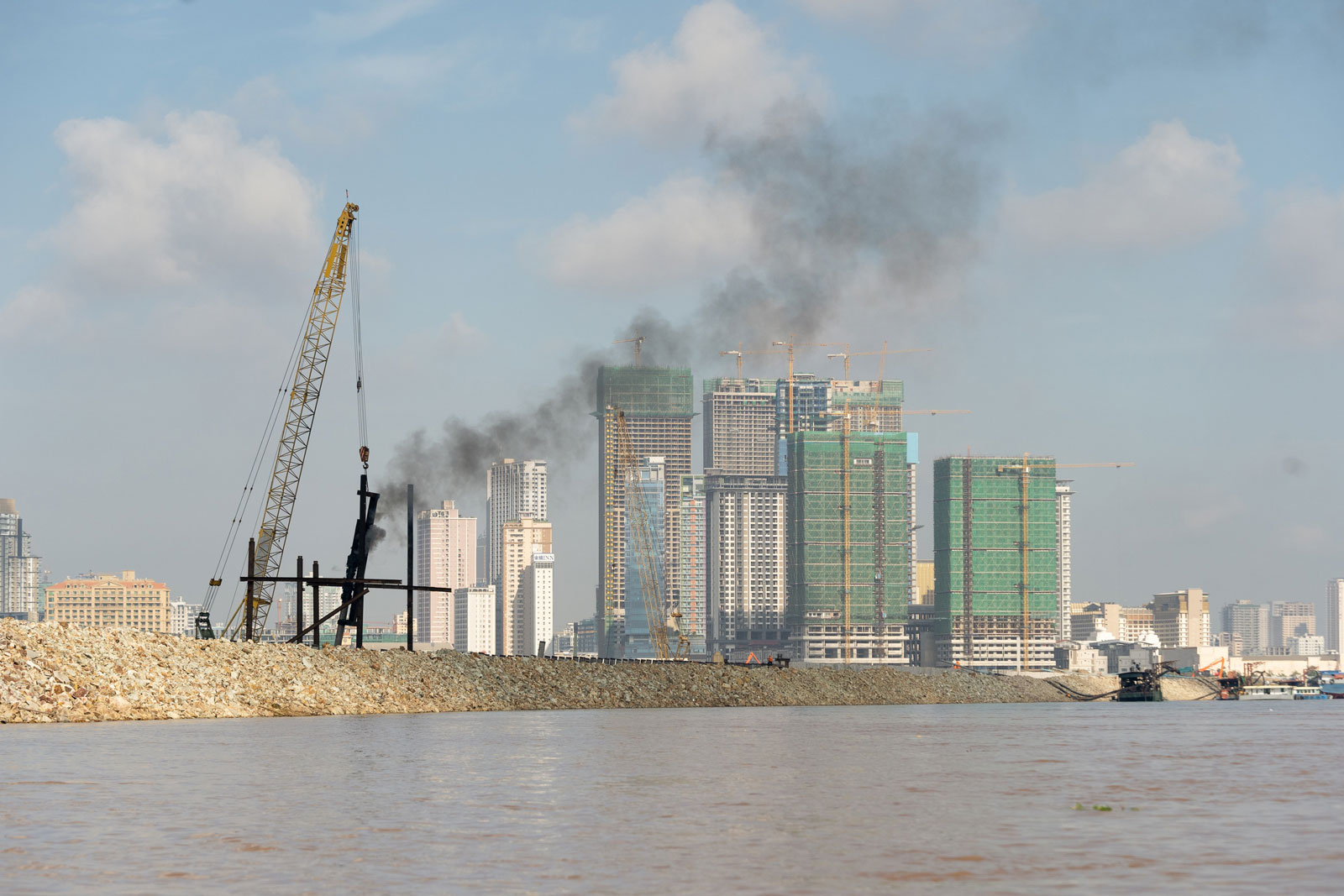
“Usually you can constantly hear it,” said Sreylean, who asked that her real name be withheld. “People used to come here for fresh air and the views of the river, but now they don’t seem to want to … The fresh air is gone. It’s like we are suffocating now.”
But even for those who can’t escape the project in their backyard, solid details about Koh Norea have been sparse. Neither OCIC nor the Cambodian government have made public any social or environmental impact assessment (EIA) studies completed for the site, which has been identified in past river studies as a particularly challenging area to manage. With billions on the table, the lack of transparency at Koh Norea has obscured the project’s real weight at a time when major infrastructure projects upstream have limited the Mekong river system in Cambodia to a battered trickle of its past self.
Land reclamation schemes are hardly new to the Kingdom and its capital, which garnered international controversy with the filling of Boeung Kak lake in 2010 and the eviction of those who lived around it, then following suit over the decade with several other reclamations.
At the centre of all these projects is rubble and sand, earth gauged from one place – oftentimes the bed of the Mekong itself – to squeeze out water somewhere else.
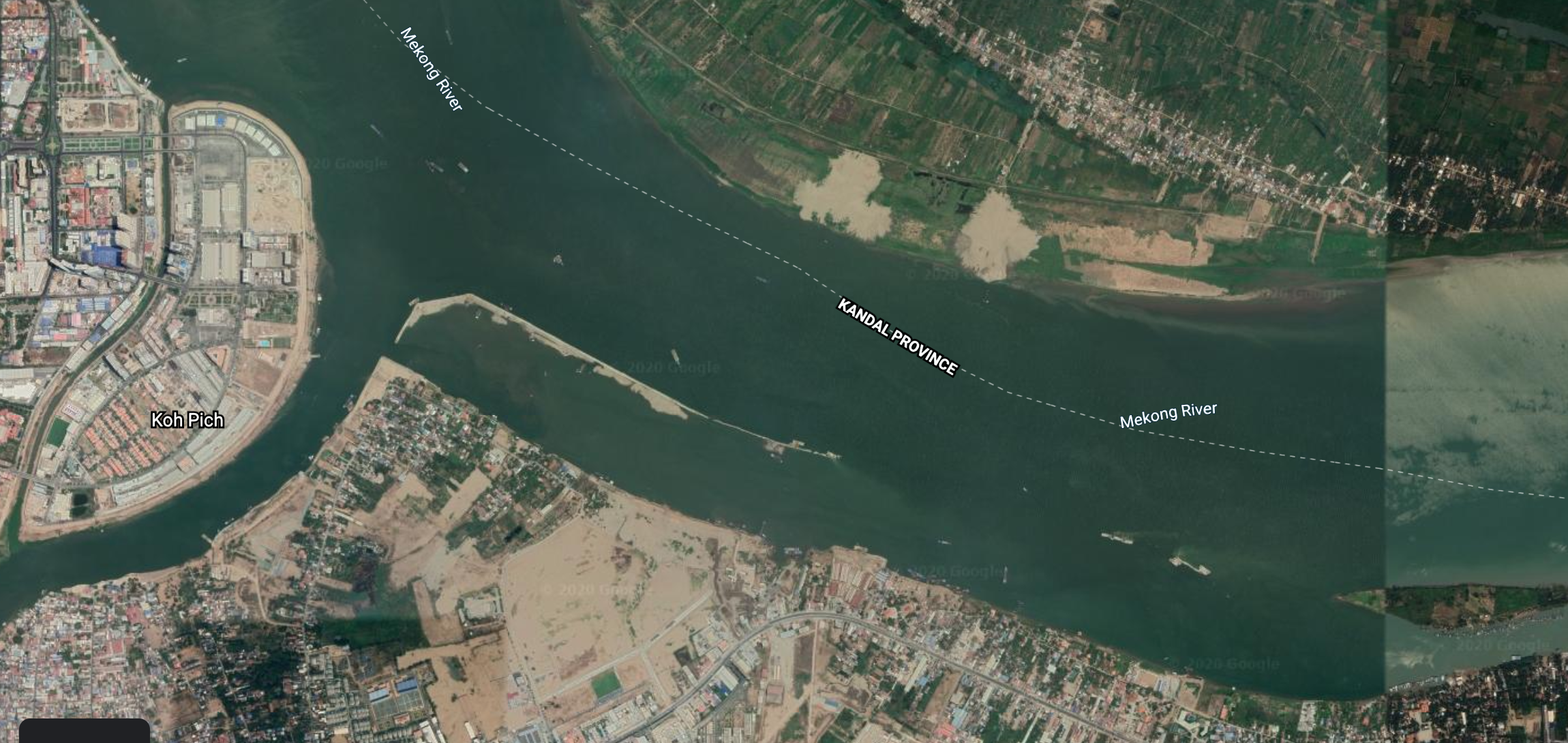
Phnom Penh’s riverside real estate is some of the most hotly desired anywhere in the capital, so even though the Koh Norea landfill could cost the OCIC an estimated $2 billion to complete, the return on that investment would likely far exceed that.
Koh Pich, an earlier OCIC project that also began as a 100 hectare infill on a small existing island in the Mekong, already seems a worthwhile investment for the firm, with 2014 media reports quoting land valuations as high as $3,500 per square metre. This figure, likely to be matched on Koh Norea, is comparable to a high-end apartment in Ho Chi Minh city.
Despite not having its own website, OCIC, led by the tycoon Pung Kheav Se, founder of Cambodia’s Canadia Bank and a long-time ally of Prime Minister Hun Sen, has built an impressive footprint in the Kingdom by specialising in major infrastructure and satellite city construction. The firm led the initial 2006 infilling of Koh Pich and its 2014 expansion, the first key demonstrations of land reclamation on the Mekong, and spearheaded development of the Chroy Changvar satellite city on the city’s peninsula district.
Today, OCIC is also building the new Phnom Penh international airport south of the city in Kandal province, a $1.5 billion venture that will sit on some 2,600 hectares and has allegedly displaced about 50 local villagers.
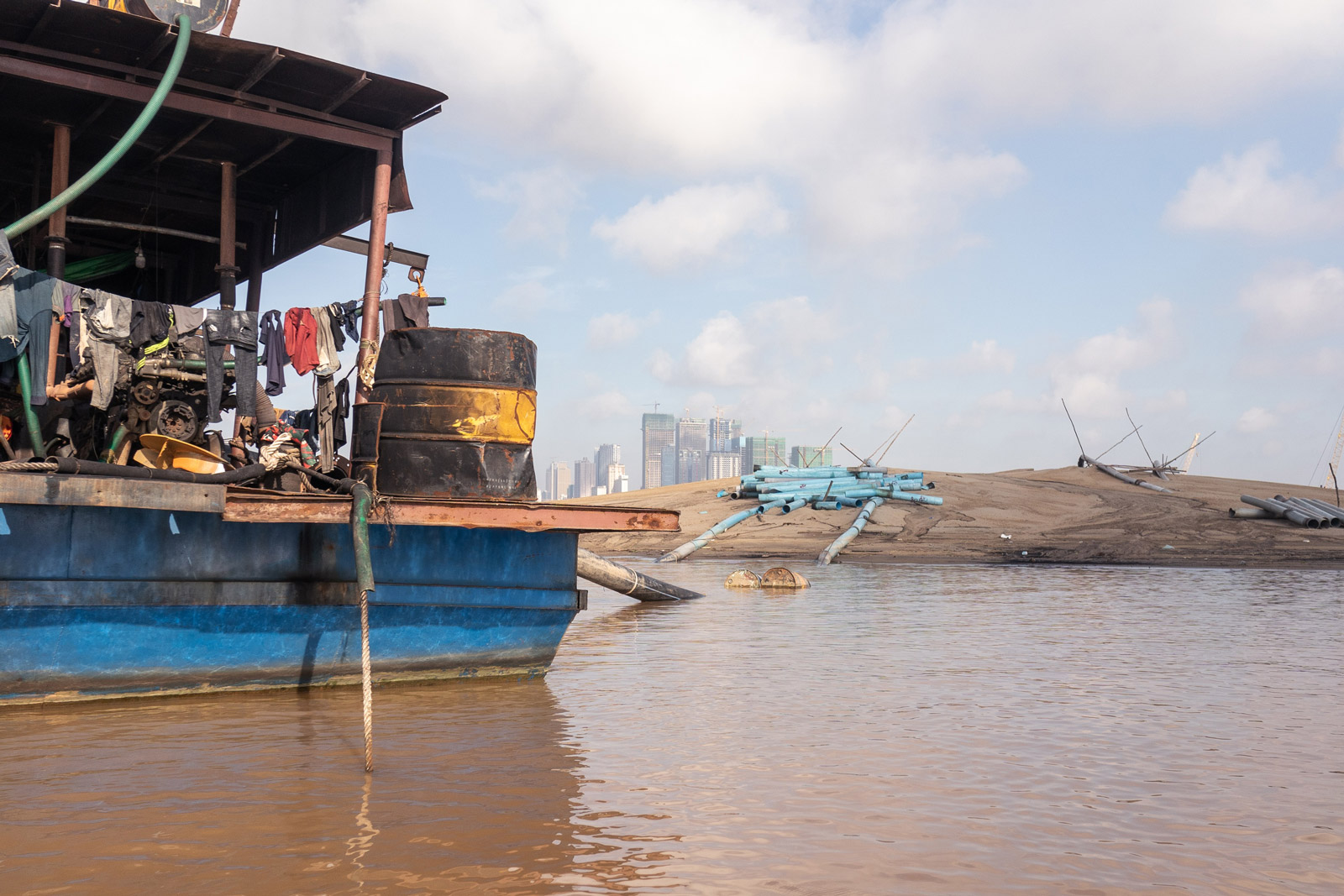
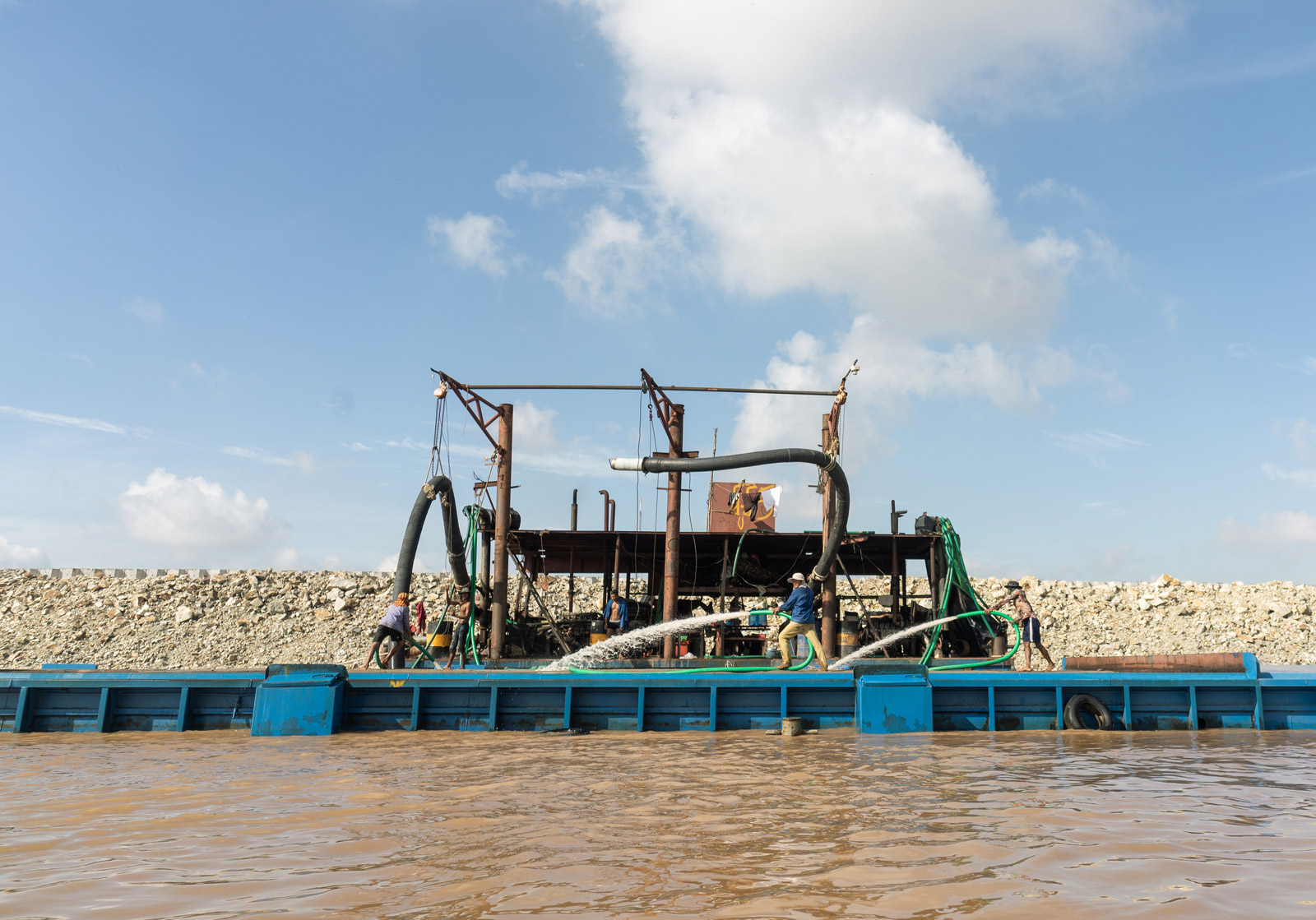
We used to be happy here … We’ll have to leave if the business fails, but I don’t know where we’ll go
Back on the Mekong, though the land of Koh Norea is strictly speaking new and unclaimed, those perched on the river banks are already facing a very different landscape.
The restaurant owner Sreylean, who’s kept her business for about a decade on land rented from a family member, was left to consider the growing sand pile as she waited on empty tables before a holiday that would ordinarily pack the huts with city folks looking to relax.
The restaurant has sustained her family, including her grandchildren, for years now. But even though the relative who owns the land has long given her a very competitive rate, she can’t survive here forever with no customers.
“We used to be happy here,” she said. “We’ll have to leave if the business fails, but I don’t know where we’ll go.”
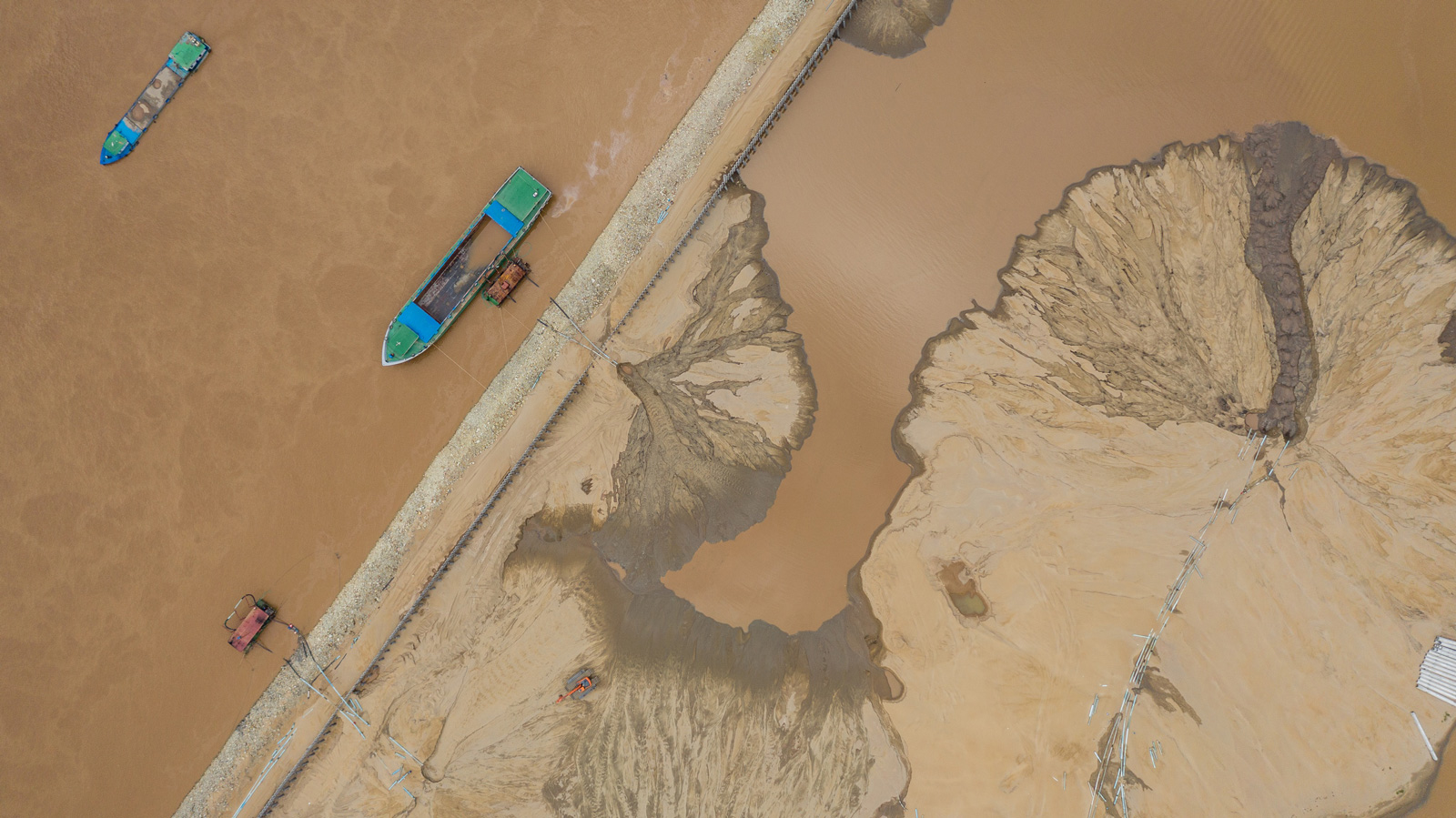
The Koh Norea project was first announced in late 2018 by OCIC manager Touch Samnang, but has received little coverage from local media since then. Sav Sokty, a representative of Samnang, said the company did not have to pay for the rights to claim and fill in part of the Mekong River.
“As everybody knows, the area does not belong to anyone. It is an island,” Sokty told the Globe. “As for the right to develop the island, we have a construction license issued by the government, proving that there won’t be any negative impact. We did not use money to buy the area. We made a request to the government to develop the area and they allowed us.”
The media outlet of the Cambodia Constructors Association trade group reported earlier this year that OCIC received the government’s blessing through an October 2018 letter signed from the Council of Ministers, which is led by Hun Sen.
In his initial announcement of the project, Samnang told local media the future island will someday house high-rise buildings in a mix of condos, offices and other projects similar to the mix on Koh Pich. Landfill officially began in 2018, though activity in the Mekong ramped up in the spring of 2020 and, if all goes as planned, will be completed by late 2021.

As part of its initial phase of development, OCIC will also build an 800m cable bridge connecting Koh Pich to the new development at Koh Norea. In May, local media reported the Cambodian government had agreed to allow OCIC import tax-free more than $40.8 million in construction materials for the bridge. The link, hugely reducing travel distances between currently severed parts of Phnom Penh, offers a tantalising vision to developers, who have already busied themselves in filling the lots along largely undeveloped National Road 1 with retail centres and gated housing communities.
But before any of those sweet dreams could come to fruition, OCIC would have officially been required by government to produce an impact assessment for Koh Norea. While publicly unavailable, the representative Sokty said the company had completed an EIA prior to starting the infill, adding that the assessment had been overseen by a hydrology expert to measure water depth at the site and to plan strategies to prevent bank erosion.
“Based on our study, by filling the land, there will be no more river bank collapsing,” he said. “After finishing with land filling, we will start to build concrete along the river bank to protect the land.”
The banks at Koh Norea have historically been pulled by the shifting currents of the rivers of the Chaktomuk junction, the watery crossroads of the upper and lower Mekong with the rivers Bassac and Sap. This has led to heavy erosion, to the point the regional Mekong River Commission (MRC) was using the peninsula in training materials as a case study of instability as long as two decades ago.
With that in mind, it’s not hard to imagine that reinforcing the banks of the peninsula as OCIC plan may have positive effects. But the murkiness surrounding Koh Norea and the lack of public information about the project has made it impossible for anyone to independently vet this.
A managing employee of E&A Consultant, a Phnom Penh firm that specialises in impact assessments, acknowledged that the firm had worked with OCIC to conduct an EIA, but told the Globe he was barred from discussing it due to a nondisclosure agreement.
Neth Pheaktra, spokesperson for the Ministry of Environment, did not respond to requests for comment on the development or the EIA process. Met Pheakaday, spokesperson for the city of Phnom Penh, claimed to have no knowledge of the project when asked for comment.

In the past, MRC experts have hypothesised potentially widespread negative outcomes for mismanagement at the Chaktomuk, including erosion ranging north to the Tonle Sap lake and south into the Mekong Delta. Changes to the head of the Bassac River, an MRC hydrologist then speculated, could even cause greater saltwater intrusion at the river’s mouth in Vietnam.
Still, one probably doesn’t have to look that far to see the environmental effects of filling in parts of the Mekong with sand and dirt.
A fisherman who went by the name Ly ferried reporters past the Koh Norea development and said access to the zone now being filled in has been gradually cut off by site security. Anglers can still access the mouth of the shrinking inlet, he said, but they’re usually confronted if they venture too far in.
Ly has been fishing most of his life, about 30 years, most of which has been in the waters around Phnom Penh. Though his hauls have grown smaller throughout those decades, which he mostly attributes to upstream damming and low water levels, he says the construction has only further damaged his prospects. Ly says the noise of the infilling is scaring off fish, while the land itself is replacing what used to be fertile waters at the joint of two rivers.
“When I was young, the river was full of fish,” Ly said, echoing other fishermen who have long made their livelihoods in the junction. “Now, not so much.”
As the fishing industry has fallen off, Ly has seen sand dredging take off. In the past, he says, the mining felt more localised, but these days “it’s more industrial, more large scale” as pumps and barges crowd the waters just off the banks of the capital. The industry has been linked to a flurry of river bank collapses along the Mekong in Cambodia in recent years. Koh Norea too has its own fleet of barges, riding low in the water ferrying tonnes of freshly dredged sand.
The MRC Secretariat stated in an emailed response to questions that the organisation doesn’t have an official record of any other land reclamation projects on the big river of the scale of the twin Koh Pichs but said it’s possible they “may exist” given the nature of development.
Nobody from Cambodia notified the MRC about the Koh Norea infill, which could be a good or bad thing depending on the results of the unseen EIA. Though the secretariat office couldn’t speak to the specifics of the project, adding they’d heard of it only through news reports, its representative stated that filling in part of the Mekong generally can have negative environmental impacts.
“The reclamation on the river may increase the risk of flooding downstream because of the loss of river capacity (i.e. storing of water),” they stated. “The river morphology is likely to change, and the riverbank erosion can potentially occur. These phenomena are the physical [processes] driving the evolution of the river, which makes it a very dynamic system.”
The commission secretariat, which is based in Vientiane, can’t interfere with the sovereignty of its member states and relies on local willingness to cooperate and share information as needed. The office’s representative wrote that members are asked to notify the MRC “of any project with possible significant impact to the Mekong mainstream”, bolding the phrase in emphasis.
In past years, the most notable developments in that category have mainly been hydroelectric dams, which have now been implicated by many hydrologists as driving low water levels throughout the Mekong basin.
Again, MRC member states do have leeway to develop on their stretch of the river, and projects like the Koh Norea infill don’t necessarily need to be reported to the MRC. But for the collaborative approach to work, the commission depends on member states to assess impacts with an eye toward the health of the river as a whole, looking to such factors as water quality and flow, as well as environmental and ecological balance. Those assessments can be especially important for reclamation projects.
“A proper study will be very important to understand the typical localised effects of the infilling. Such a study should include a hydrological analysis and the construction of the hydraulic model,” the secretariat representative wrote.
Though the OCIC representative referenced such work, its exact findings remain unclear.
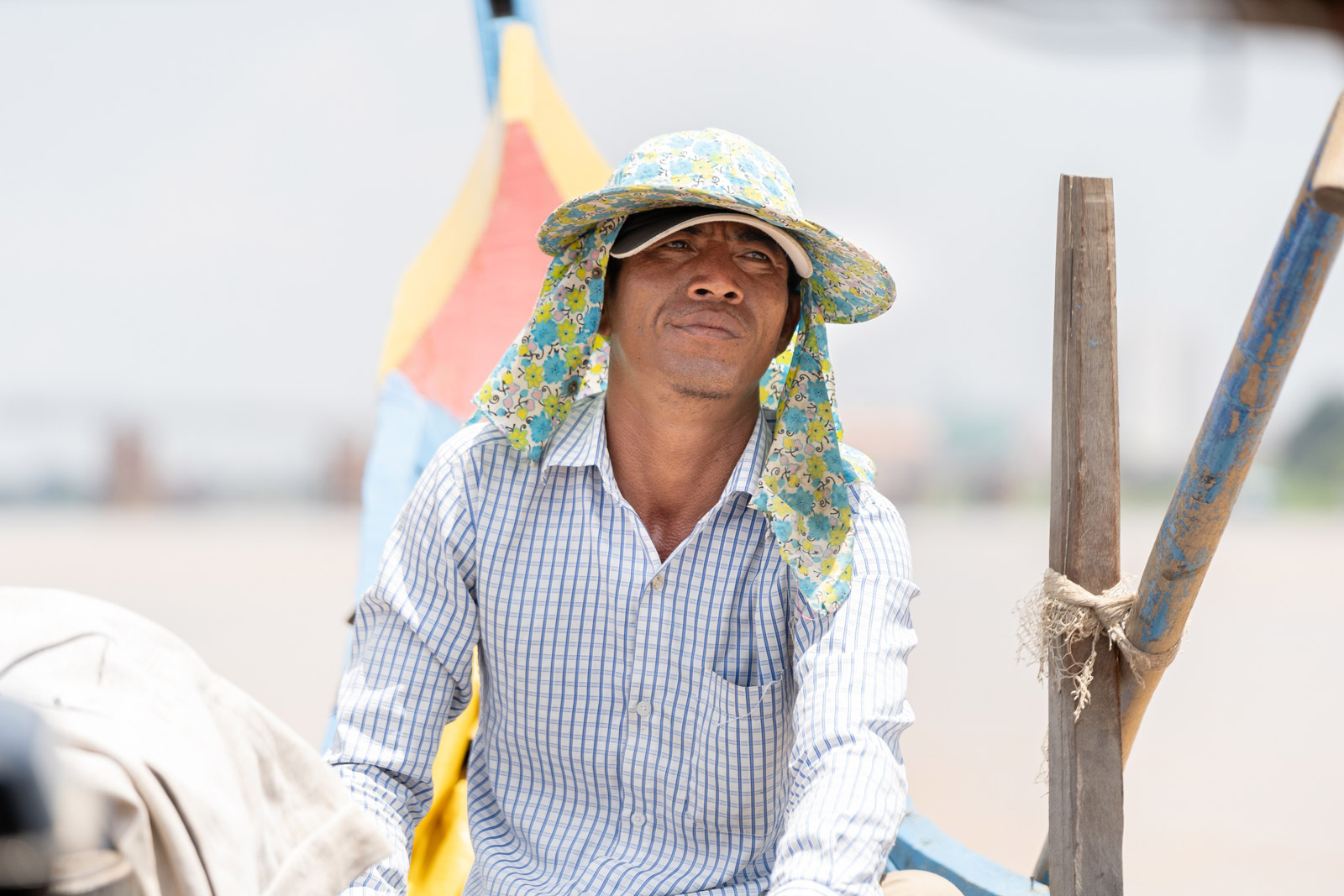
Professor Ian Baird studies the Mekong and is the director of the Center for Southeast Asian Studies at the University of Wisconsin-Madison. Baird has observed and commented on the Koh Pich development, particularly around its 2014 expansion, and said the Cambodian public deserves a say on anything of the scale and potential impact of the false islands.
“With an important place like Koh Norea there needs to be pretty detailed studies and a high level of transparency,” he told the Globe. “When more information is available, that allows people to more easily scrutinise it and would probably lead to some aspects being prevented and others not. The development would be better and it would be to a larger benefit to the city.”
As it is, Baird said the lack of available information on Koh Norea means regular people won’t know what impact to expect until well after the fact.
“It feels to me more like death by a thousand cuts, with this being one big cut,” Baird said of Koh Pich’s growing neighbour. “The river is part of the wetland environment, so every time you reclaim the river, you’re channelising the river, it’s changing it ecologically. If you change it to make it narrower and narrower, cumulatively, these projects will cause a lot of problems.”
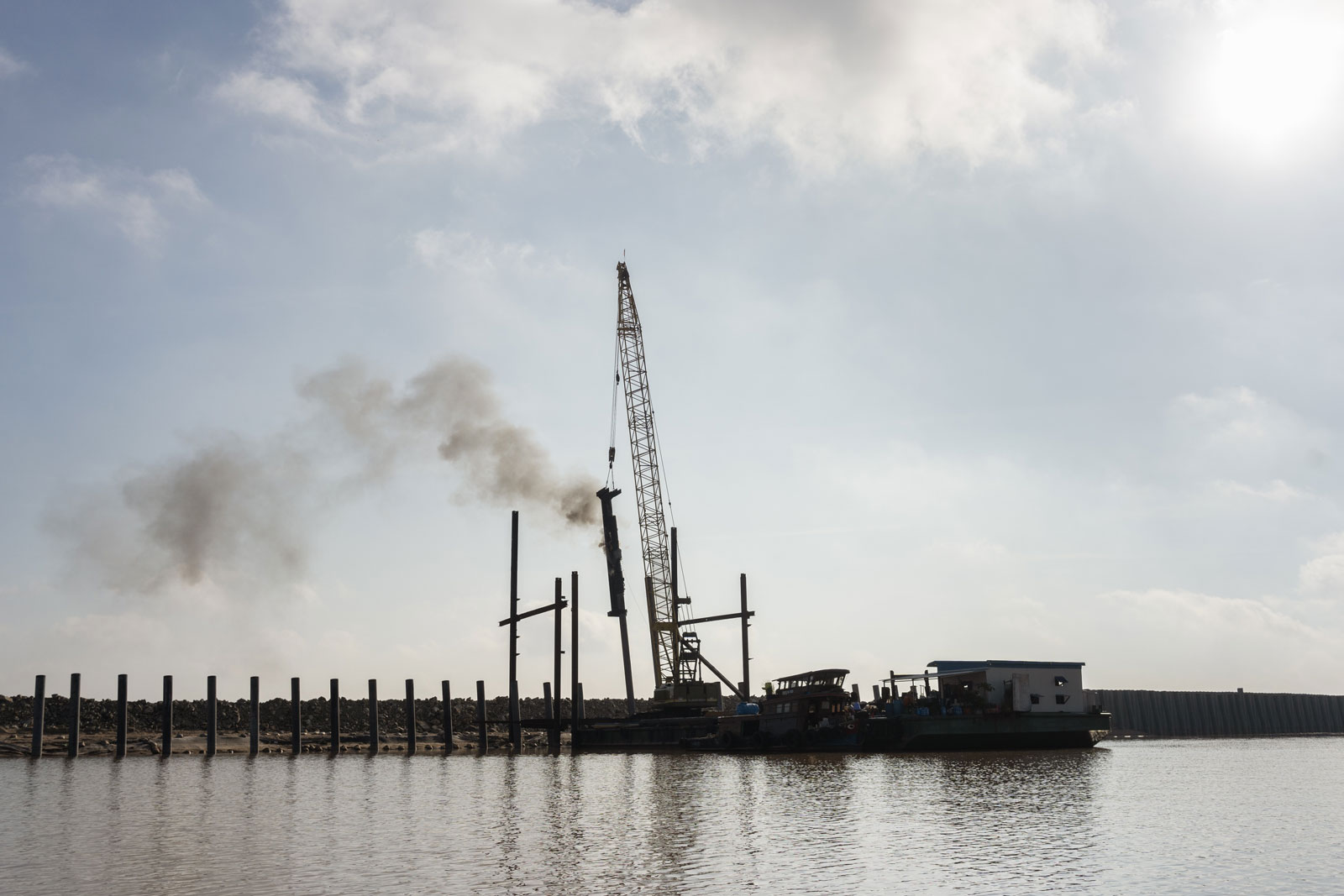
People like Sreylean who depend on the river without owning a chunk of it seem to be most immediately vulnerable to Koh Norea’s tycoon-led business model.
She said representatives of the project had organised a meeting with local land-owners to discuss the project after it had already been approved. Developers granted one small concession to her and other bank-dwellers by agreeing to leave a narrow strip of water between their existing property and the edge of the new land.
Sreylean had already staked out her territory and fenced off her small ‘yard’ of water with a line of white styrofoam containers, between which she was tending an aquatic vegetable garden as she had in years past. In the dry season, she worried, there would likely be no water in her yard at all. If she’s somehow able to stay put, she has a sinking feeling the development will eat up whatever buffer is left within a few years.
Meanwhile, she’s found no real audience for her dissent. Village leaders agreed to the project without consulting locals, Sreylean said, and the developers themselves are already charging full speed ahead.
“The authorities never asked what people thought, and even if we complain we cannot win,” she said. “We are poor, how can we challenge this?”


